
Meet Gerald Pollack
You know the states of water: solid (ice), liquid (water), gaseous (steam). But did you know that there is a fourth state, the liquid crystal? And that this fourth state of water is extremely abundant in nature and in our cells? That this state explains many of the mysteries surrounding the properties of water? Skeptical? Listen up.
Full transcript of the interview:
So I tried to marry those two concepts and pretty soon, my main interests shifted away from the role of water and muscle contraction to just water per se because water is so incredibly interesting and water is not only in muscle but in every cell of your body. And that's all over, and rivers, oceans, ice... what have you!
So it became much more important to study water than it seemed to study muscle contraction. So I left the field of muscle contraction and began focusing on water.
This was the start. My start actually was with a book and it is the first book on the subject that was called "Cells, Gels and the engines of life" and the purpose of the book was to try to introduce the concepts of Gilbert Ling to a more general audience because despite Gilbert's extreme brilliance his writing is not so clear and that's difficult even for physical chemists to understand what he's writing.
And it seemed that I have a knack for presenting scientific concepts in a way that's maybe more understandable. So I took it upon myself to write that book, and the intent was to bring Gilbert Ling's ideas to a more general audience. I think I succeeded. The book was controversial. Some love it, some hate it. But it went beyond Gilbert Ling : it went to demonstrate that not only the water molecules were ordered inside ourselves, or structured as Gilbert said, the molecules are lined up in some way about; but also that this lining up of molecules - or I should say the change, the transition from lined up molecules to ordinary water molecules - was a critically important trigger for practically every major event that the cell participates in.
So the critical trigger for the most common events like muscle contraction is one, another one is nerve conduction, another one is secretion, another one is mitosis... All of the central functions of our cells seemed to be triggered by that transition from the ordered water to the disordered water. So that's how it started. And from there on we began experimental work because this was so seemingly, so incredibly important and central to all of nature that it was impossible to stay away from it.
And so we began experiments. So that's how it all began.
It is a shift a point of view in several senses. One is particularly in the understanding of how muscles contract, and the other is a shift of understanding about water. It really amounted to uncovering experimental evidence that there was actually a fourth phase of water. So, we all learn in school, even in middle school, that there are three phases of water. You know: there's the liquid phase, the solid phase (that's ice) and the vapor phase (that's in the air).
But long ago, more than 100 years ago some scientists came to suggest that there must be more than three phases. There must be a fourth phase. Why? Well, the reason is that with the three phases, if you tried to explain common observations that you see all around you, you can't do it. So each of these difficulties is considered to be or labeled as an anomaly: "anomaly", something that is strange, that doesn't fit that theory.
And by now the number of anomalies has risen to something between 60 and 70. And you can find them on the web. So, when the number of anomalies grows so large, it reaches a point where you can say that there must be something that's wrong with the theory: because if the theory is adequate, then it must be able to explain at least most, if not all, of the the observations - but three phases don't do it. And that's why there is a lot of room left for the concept of fourth phase of water.
And what we finally found experimentally was something similar to what Gilbert Ling had suggested. But different, and in some fundamental ways. And by the way, before we go much further, I should say that this fourth phase of water that we identified is in fact the water that fills our bodies. So it's not unimportant!
And the first, besides the fact that it's ordered or structured in some way, not random as the way the water molecules are in a glass of water: one of them is that it's not neutral in its charge. So when you drink a glass of water, the glass of water, the water is neutral: it's neither positively charged nor negatively charged. But this one almost always (not always) is negatively charged,
and the region beyond this fourth phase has an equal amount of positive charge. And the reason for that is that it's created by water molecules that split. Water molecules: we think of H2O but another way is H+, OH-. And when you put the two together it's H2O.
And we found that what happens to create this is that the water molecules split : they split into H+, OH-, and the OH- for many molecules gathered together to form this fourth phase which is actually quite large. So that's one : it's charged, and the region beyond is oppositely charged. It's just like a battery. And in fact we've demonstrated that you can put two electrodes one in the negative one in the positive and connect it to a light, a light bulb or LCD light emitting diode - and it lights up.
So it's really cool.
Roughly 200 millivolts. That's two tenths of a volt but you can put many of these together and you can get many volts, or you could put them in a different arrangement and get the same voltage but a lot of current depends how you connect them. So this is this is one attribute of this fourth phase or another way. We call it is exclusion zone because it has the character just like ice as it forms of excluding almost everything
You know when the ice forms it's a pure crystal. But in order to be pure if you start with water that is not pure and that has contaminants it has to push out or exclude those particles and contaminants and you can see it at the bottom of the glacier. The rocks the glacial Maureen is pushed out as the glacier forms so it has that characteristic of excluding. And so forth. So we call it the exclusion zone because we can see a big zone in the microscope.
Sometimes it's big enough to see with your eyes even without a microscope and it pushes out. We put purposely put particles in the water and you can see that as this zone grows the particles are pushed out. So we call it the exclusion zone. Now that's a great name because because the shorter name is EZ (easy) for exclusion zone and it works really well in the U.S. but in Europe it's EZ and so EZ is easy to remember but that doesn't work quite as well.
So that's one characteristic of this zone : it's charged and it forms a battery.
Well that's the second point is is that that it actually comes from light!
This is this was a surprise to us and it took us quite a while to to figure out that, that this was the case. You know, every battery needs to get charged. So is your smartphone after a day's use. You need to plug it into the mains in order to have a recharge and the same is true for every battery, it needs to get its energy from somewhere in order to get charged up. And we couldn't figure it out. You know you can't take this experimental chamber and plug it into 220 volts or 110 volts - it doesn't work that way.
And we thought - where on earth can the energy come from? And it took a student, a young student working in our laboratory who did what he was not supposed to do. He was supposed to be intently working on some experiment,
and he looked around and he noticed that on the experimental bench was a lamp. One of these goose neck lamps. He took the lamp, he shined it on the chamber and he called me in to see - and we could see that this exclusion zone where he was shining the light, the exclusion zone grew, and it grew really impressively - it grew by three or four or five times. And then when he removed the lamp it gradually went back to the original. And so it didn't take a rocket scientist to figure out that if light expands the exclusion zone, then maybe light light energy photons are responsible for building this.
So he got very excited about it, and we did experiments to figure out which wavelengths of light is responsible. There are many wavelengths of light, for example coming from the sun, it has all the colors that we recognize and even colors beyond the long wavelengths (infrared) and beyond the short wavelengths (ultraviolet). And we tested all of those to see which was the most powerful. It turned out to be infrared light.
Most people have no clue about infrared light and where it comes from. You know, we know if we look into the toaster, we look in and we see the coils glowing bright orange and we feel the heat. We say : "oh you know it's warm and it looks like it's generating infrared light". And it does ! and the same with your electric heater, it glows bright orange, it's hot and it generates infrared light.
But in fact it's not only that : everything around us is generating light. And so if, for example, we were to turn off the lights in this room, and if it were dark enough that we couldn't see with our naked eye and your camera couldn't record anything. If I took out an infrared camera where the sensor is not sensitive to visible light but to infrared light : even if it's completely dark here, you'd get a beautiful image with this camera.
I could see everything, I could see all the people around here, the wall, the chair, the camera and so on. No problem ! because all of it is generating infrared light - and that is the energy principally responsible for building this fourth phase as we call : the fourth phase of water or EZ water. It's all around us. It's free, it comes. It's there all the time. In fact it's really hard to get rid of it if you want to get rid of it.
So the fact that it's there, and it's free, means that you always have a certain amount of EZ water.
Usually this water forms next to certain surfaces. So if you have a surface and the water meets the surface because you have that energy around to build the EZ water, what happens is at the boundary where the water meets the surface,
the water undergoes the transition from ordinary water to this highly organized EZ or fourth phase water. And it does it molecule by molecule, or I should say : sheet by sheet.
The molecules are organized into hexagons into a sheet ; first one sheet, forms the next sheet, next sheet... So on ! so it forms by virtue of the energy from the infrared light. And if you add more infrared light you get more layers. And if you have less of that red light you get fewer layers and because there's infrared light around us all the time we always have EZ water and you just turn it up and you get more of it ; and reduce it,
and you get less of it.
So typically it forms next to certain types of surface - not all surfaces. This kind of surface where it likes to form, is called hydrophilic Hydrophilic means "water loving" as opposed to hydrophobic: "water fearing". On hydrophilic, if you have such a surface and you drop water, it spreads out. If you have a hydrophobic surface like Teflon for example, you put water and beads up, so we don't see
this fourth phase growing next to hydrophobic surfaces, but only next to and not all but many if not most of the hydrophilic surfaces.
So I think basically just to summarize the two or three main features : it likes to form next to hydrophilic surfaces; it charges (usually negatively charged) and the energy required to build it is from infrared light.
So the aha moment came when... - I knew about the work of Gilbert Ling and I knew that there were some places where the molecules of water had to be lined up and we were looking for that, we were looking for an experimental situation where we could find evidence of water molecules being lined up. It's not so easy because you can't see a water molecule: you can only infer.
So we were looking in the microscope and we put inside a chamber a gel, just like ordinary gel that you'd have for eating, and we surrounded it by water, and we put little particles in the water, and we noticed that right next to the gel there was a region that had none of these particles - and we looked in the microscope, and I was so excited about it ! Because I thought: "that must be the region where the molecules are lined up! " because if the molecules are all lined up like in a crystal, they push out the particles and you could see it with your naked eye just by looking in the microscope - and it was so big!
We expected maybe something equivalent to 10 or 20 molecular layers - but this was like a million molecular layers! The people looking around the microscope said: "Ah, it's impossible! it can't be! " Every physical chemist will tell you that it's impossible for water molecules to line up by the million - maybe... five or ten? That would be extraordinary. But a million? impossible! And I thought this was real because I knew about all the evidence beforehand, and I expected this.
But the other people looking around were more skeptical.
GP: So, within a few days, we had done some additional experiments to deduce what must have been going on. And then it became clear that we were looking at an extraordinary volume of ordered, or structured, water which later we called EZ water, fourth phase water. So that was an aha moment.
Another aha moment was when we discovered that this was charged because we had a chamber with either a gel or a polymer or something in water and next to it, we found that exclusion zone. Basically there were only three things that we put into the chamber : the gel, the water and the particles - and the water is neutral. So when you put a lot of neutral water into the chamber, it's almost impossible to imagine that this exclusion zone would be anything but neutral.
GP: When we stucked the electrodes, we found out it was negatively charged. It was astonishing for us, because at the time, we hadn't quite realized that this is a battery just full of energy! We never expected it to be and we thought, maybe, we made a mistake. My friend was working in the laboratory, he was looking over our shoulder when the experiment was done and he was a bit skeptical too. So we got on the phone and he called his wife in Russia and he said (whenever the Russian equivalent is) :
GP: "Hi honey! What have you? Could you please repeat the experiment?"
His wife had been doing experiments with gels and electrodes similar to the electrodes we were using. Within a few days, we knew that not only did this happen in Seattle, but it also happened in Russia. So we were delighted that this could be repeated in another labatory - and that was another aha moment.
Another one - I guess I could go on! Another one was when we realized that the body is full of this this kind of water because, you know, EZ water likes to form next to hydrophilic surfaces. Inside the cell, there is an enormous number of hydrophilic surfaces: all of the molecules, the large molecules inside the cell are hydrophilic, mostly on their outside, sitting next to water.
So the situation is exactly what you would expect: ideal for building EZ water.
So, because of this crowdedness, every water molecule on an average is no more than three or four water molecules distant from one of those surfaces and therefore we expect all of the water inside - well, essentially all the water inside the cell, to be EZ water.
Then finally the aha moment came when I realized that this is the reason why all cells are negatively charged! It is very simple: because the charge comes from the EZ water which is negatively charged.
That was definitely an aha moment because I remember, when I was a student and I learned about the negative charge of the cell, I was really excited because I had previously studied electrical engineering. The idea of voltages, charges, was very exciting to me. Next year I was sitting in a physiology class and I learned that the cell had negative charge and I was really excited - but the mechanism was bizarre.
I thought that I actually had trouble understanding it. The explanation had something to do with pumps in the membrane which later became pumps and certain channels that pass certain ions but not others.
It was very complicated and they were logical reasons why it was bizarre. I kind of gave up on that: I thought I was simply too stupid to understand. I found now that some of my colleagues felt the same, that they were too stupid to understand too. I think it turns out not that they were too stupid to understand but that the mechanism didn't make any sense.
The central mechanism? Forget about the pumps and the channel! The simple mechanism is that the reason the cell is negatively charged is, it is full of negatively charged EZ water. Very simple. That was a definite aha moment.
Y: I was wondering on the other important consequences for us as a human body?
GP: Well, yes, there are many consequences for us because it turns out that what you need is EZ water. It is natural, it fills your cells. But if you don't have enough EZ water in your cells, that means that the cells can't work properly because it is natural. The cellular dehydration is essentially a lack of EZ water.
GP: It is simple: if you want if you want to restore function at minimum, you need to restore this EZ water! It came to me that there are many ways, known by our ancients in fact, to improve health.
It turns out that these similar mechanisms - so far all of them - involve a build up of EZ water. We tested it, we found that. I can tell you this but I'll just mention a couple because it is so simple:
GP: One of that is: connecting yourself to the earth. You know we don't do that anymore. We all live in homes with wood floors and we have rubber soled shoes so we don't connect ourselves to the earth. However it's been known since ancient times that connecting yourself to the earth is good for health. And we owe it well too because when you take a walk on the beach barefoot, most people feel really good afterwards.
Or if you immerse yourself in a mud bath, you feel good after it. And the general thought is, well, we don't know exactly why, but maybe it impacts the immune system or maybe it's just psychological or what have you. But it actually turns out to be really simple.
And what I mean is that the Earth is replete with negative charge. The earth is practically an infinite reservoir of negative charge. I was totally astonished when I found this out. My primary education was electrical engineering. If one of my professors told me that the Earth was negatively charged while we were told it was neutral...? Everybody knew it was neutral! You could have knocked me over with a feather!
GP: And it turned out, not quite literally, but that was the case: I was in my laboratory about 10 years ago; a Russian guy with a very clean life was working in my lab and as he was leaving after 6 months, returning to Russia, he dropped a casual remark about the negative charge of the earth and the Earth's electric field. I Said: Andrei, you're talking about the magnetic field, right? he said No, no, no! The electric field. Don't you know about the electric field? I had never heard about the electric field of the earth!
GP: Don't you know the earth is negatively charged and the ionosphere is positively charged, and it's like a battery between the two? I said, I've never never heard of such a thing! He said, well, there must be something wrong with your education system in the US! And it turns out there is something wrong with the educational system in the US, because it's really hard to find anybody who is educated to understand that the Earth is full of negative charge.
So, the next morning after Andrei left, one of my students came to me with a book. It was the famous lectures of the Nobel physicist Richard Feynman called lectures in physics and almost every graduate student in studying physics read those books because they're full of wisdom and also humor and clarity of presentation. So he opens volume 2, chapter 9. And there it is, about negative charge of the earth, and he reviews all the evidence for the negative charge there. So, Feynman knew about this! And his colleagues knew about this! But we progressively, gradually, forgot that the Earth is negatively charged.
GP: The evidence is there. We just, you know, haven't followed the evidence and that's why almost nobody knows.
So if you connect yourself to the Earth, the electrons from the negative earth have the capacity to seep into your body. If one of your cells or one of your organs doesn't have enough EZ water, if it doesn't have enough negativity, that negativity will seep in if you connect yourself to the earth. The negative charge of the electrons seeping in will replenish what's missing.
And since EZ water is full of negative charge, what that charge that comes in should do? It should convert ordinary water into EZ water and thereby restore the EZ water that's missing inside of your cells.
So if you've got a sore muscle for example, and the muscle doesn't have enough EZ water, you connect yourself to the earth.
GP: The electrons come in, they restore the EZ water and the muscle cells restore health. The same thing with brain: all the nerve cells, if they're deficient in an easy water and you connect yourself to the Earth, you'll feel better.
So in terms of implications, building an easy water in natural ways is a very simple way to restore your health.
There are many others similar ones. The sauna is another. It's warm and the warmth comes with infrared energy: the two are essentially equivalent. So you immerse yourself into a sauna for 20 minutes or so, you come out shower or jump in the river or whatever and you feel like a million dollars! Why?
I think the reason is very simple: because your body is absorbing the infrared energy and converting the water into EZ water and restoring the missing EZ water in your cell. And when you restore, you allow the proteins to function as they should function. Proteins are ordinarily surrounded by EZ water. If they're missing EZ water, they're functioning in an environment that is foreign to them. And they can't function as well.
Where is this headed? It reminds me of a comment made by the father of modern biochemistry, Albert Szent-Györgyi who said: the only time he was required to lie was when he prepared a grant proposal for our National Institutes of Health, because he had to project five years ahead ! he had to project which experiments he was going to do next year. Year two? year three? year four? and year five?
And he said: "impossible". He said, "I don't know what experiment I'm going to do tomorrow until I analyze today's experiment." Of course that's what science is like. So you know when someone is asked to predict what will be the direction, it's not so easy to predict... But I can certainly hazard a guess and I think the guesses may be in in a direction that may seem strange to a lot of people.
The direction has to do with information in water. Scientists in the past have been ridiculed, broadly ridiculed, especially French scientist Jacques Benveniste who did experiments, and the interpreted experiments says that the water actually had memory, information in it.
And most people hearing this think: "well this is bizarre. This is really strange. It's impossible." And one of the reasons they think it's impossible is, they think of water, liquid water, as having molecules that are randomly oriented with one another and bouncing around a huge number of times per second. It's impossible to think of a substance like that as retaining information, usually. Usually information is retained in solids and crystals, like for example the thumb drive that you put into your laptop.
It's basically a cristal of silicon content, silicon dioxide, and each atom or each unit can be a zero or a one, depending on the information that you put in; so, it stores information. Well, what we discovered in the EZ is actually, almost to say, a liquid crystal which is in between a liquid and a solid.
But it's ordered in the same way that the silicon in your thumb drive is ordered. And so there is then the capacity (at least in theory) that EZ water is capable of storing information. And if you think about the prospect - you know, if you think about digital computer memory where each atom could be a zero or one, on/off or however you like to describe it. In the case of the EZ, the structure is hexagonal.
It comes in hexagonal layers and each atom has a special place. It's ordered.
And it turns out that each of its oxygen and hydrogen, they're all over in a three dimensional ordered array, and each one of those, each one of the oxygens, it's well known, has five possible oxidation states. Minus two is the most common one, but there's also minus one, zero, plus one, plus two. So instead of having two states (zero, one or on, off) it has five states. If you think about a capacity for information storage it's huge.
It's much much larger than the current digital computer. So if nature uses EZ water to store information, Mother Nature has figured out how to do it better than the technologists have figured out how to do it. And it wouldn't surprise me if one day if one day our digital computers may have a memory built of EZ water. In fact there's an Italian group that has Vittorio Elia in Naples that has been able to solidify easy water at room temperature!
So imagine a solid water at room temperature. Imagine solid water at room temperature! This is EZ water. So one day, I suppose one can imagine a digital computer that's built of solid, EZ water. So our bodies are filled with EZ water,
a lot of people have produced evidence that water can actually store information.
We're trying to figure it out. I mean this is a direction that we're now facing. So one way of imparting the information, we think, is if you have a hydrophilic surface : EZ water builds next to a particular surface. There may be a generic structure to the EZ, this hexagonal structure that I mentioned. But the generic structure may vary depending on the surface that nucleates the growth of that. So this is one way.
It means that EZ water in your muscle cell may be slightly different in structure than the easy water in your nerve cell, depending on what protein surfaces or what biological surfaces nucleate the growth of that water. That's one way. Another way is through electromagnetic information :
People have done experiments that have demonstrated that when you put energy into the water, the structure changes ; I'm talking not only of the very well-known experiments of Emoto the late Masaru Emoto, which is now continuing
beyond beyond his death. And most scientists reject that because the methods were not scientific ; Emoto tended to cherry pick the images that he liked and for that reason many scientists rejected it.
However, what he found creates a basis for understanding how intention,
or one's thoughts, or sounds and such, can impact the water and leave information which then appears when the water is frozen into crystals. We understand that because of the experimental results that we have : this is treated in the last chapter of my "fourth phase of water" book. In order to convert water into ice you must go through the EZ state,
So if you freeze water it's water, EZ water, ice; if you melt the ice it's ice, EZwater, Ordinary water and that easy phase or stage that that's where the information can be stored based on the fact that is it ordered. So if you put your intention in and the intention is received by the easy water it should be. It should show up when in the character of the ice. So as I said, most scientists reject the observations of Emoto because they were not done a scientific basis.
but our results show that there is a possibility that this phenomenon can be absolutely real.
I think it's possible that it could explain homeopathy, because in homeopathy you do serial dilutions, and you take an original substance and dilute it, and dilute it, and dilute it, and you dilute it to the point at which there is nothing left but water: all the original molecules statistically should be absent. The implication is that somehow the water that has been in association with those molecules, if it works, it has to be, it has to have the capacity to store information.
And I think that's the case.
Absolutely yeah. I mean what we found is a molecular basis that could explain homeopathy. I think there's a real possibility. Most people reject homeopathy because, after all, the idea that water can store information seems absurd because of the fact that ordinary water molecules are bouncing around many times per second and randomly oriented : impossible to store information.
However if you have EZ water,
then it's quite possible to store information, because the information could be stored in changes in the oxygen molecule, changes in the oxidation state from a particular oxygen atom from a -2 to -1 or +2, +1 or whatever that changes the array of oxygen molecules. Basically that's information, and it could be retained for long time. We did experiments recently with magnets : we found, we put a magnet next to water,
and putting the magnet next to the water changes the water, and then we remove the magnet and the change in water, we found, could be retained for several months before it disappears. So in that particular experiment: several months. But in other other cases it could be shorter or even longer. We don't know whether it's short term, middle term, or long term. The experiments are now too primitive. But what we do know is that: molecules can carry information. One interesting experiment in that regard is from Luc Montagnier who won a Nobel Prize for identifying HIV.
He was a friend of the late Jacques Benveniste. When Benveniste passed, he started taking over the line of experimentation that Jacques was pursuing because he knew there was something to it. And his results are simply astonishing, they have a lot of potential impact for health. Just simply speaking, the fundamental experiment that he did that shocked everybody - but has been repeated: he took some DNA in a flask of water
(actually it was diluted somewhat), a closed flask and next to it is another flask of pure water. The two are sealed. They have no communication with one another. And he claimed, Luc claimed that information from the DNA, or actually the water surrounding the DNA, was being imparted to the pure water. And then he used this water to create new DNA. And the new DNA had the same sequence as the DNA that was sitting next to the water. It is remarkable because this is a remarkable demonstration that information can be transmitted to water : from water and to water,
and that information could be used.
So you can imagine that healing capacity of putting information into our body, information to to change the water in a positive way, and to repair something that is pathological. It could have enormous impact.
So this is, I think, an important direction not only in our own laboratory but in an increasing number of laboratories around the world.
We have a conference that we run each year in Bulgaria. It's called the annual conference on the physics chemistry and biology of water. Many different types of presentations are given there and increasingly, the number of laboratories
describing evidence for information storage and transmission in water, each year increases. So this is this is an area of the future. Right now. It seems "woo woo. How is this sort of thing possible, it doesn't? it sounds way out there", but the evidence is there.
Even from a long distance: one laboratory measures the spectral properties of water. And they're pretty stable. But when somebody from up to ten thousand kilometers away focuses information focuses their intent on the water, the structure can change. It is remarkable.
You know, one issue that that comes up is it advancing scientific knowledge.
If you think of all of science, all of that, all of what could be known eventually, what fraction of this do we already know ? I asked this question to my colleagues - and they're mostly biologically oriented colleagues - and I got two types of response: one type from these are biomedical type of people. I asked them in the cafeteria, I just went around from table to table asking people and I said: "Pardon me if I if I may ask, can you tell me,
can you respond to this question? If you consider all that could be known, how much is already known? " Many of them said, after a bit of thinking and after a strange look, what kind of question is this guy asking? They said: "oh maybe 60, 70, 80% is already known of all fundamental to science" and other people said "oh, less than 1% for sure". We know almost nothing about reality. We were in the dark and the question is, well if either of those is correct, which one is correct? I strongly feel that the less than 1% is correct.
And part of the problem lies in the enterprise of of doing science. Most of us think that scientists are open minded, looking for truth. And certainly many scientists are. But there is an impediment to finding truth and the impediment is the system of doing science. So I give an example: Suppose the scientific enterprise believes the common knowledge is that the earth is flat.
After all you know you look out there and it looks flat. So the world the Earth is flat. It seems pretty obvious and pretty common. But someone - let's say myself - started thinking and I say, "you know, I've looked at some satellite pictures and it doesn't look flat, it looks spherical, looks round and I was thinking about the flat earth and I usually travel quite a lot and I decided to look out, look out the window of the plane as I was travelling from Seattle going west to China and then to the Middle East and to Europe and to the east coast of the US and back to Seattle and home and I was looking out the window looking for the edge of the flat earth.
There had to be an edge because I could come back to the place I started. So if the Earth is a cube or something, there had to be, I couldn't find the edge and I'm able to come back." And so I write a proposal to one of the granting organizations and I said, "Well everybody thinks the earth is flat but I have some, as we call, preliminary evidence that the Earth is not flat and it might be spherical and because this is a critically important question about the shape of the earth.
Please can you give me some money so I can do the experiments that I need to to do to test whether my hypothesis is OK." So it comes to one of the organizations and the gatekeeper sees the application and said "Oh, this looks pretty revolutionary.
I don't know. We have a limited amount of money should we give money to this person or give it to somebody else? " And so they hire the experts in the field to make judgments. Well, who are the experts in the field? All the experts are the flat earth people, the people who have made their careers by discovering various features of the flat earth. And how do you think they're going to receive my proposal? Not very enthusiastically: if I'm right, they're wrong; and they're wrong, their entire career is in jeopardy because suddenly they've gone from the kingpin in their respective fields to someone who is a has been,
Who's wrong, you see. And so, the chances that I'm going to get my money are very slim. And so being a man of reasonable intelligence, I realize I'm not going to get my money so I better shut up about this round earth and do something more mundane and less revolutionary. So what happens, if you multiply this by the numerous scientists around the world (situation is the same in almost every country): a revolutionary idea has almost no chance of success.
This is known by scientists. It's also known by the granting agencies, but these agencies are so big, they have so much inertia, it is difficult for them to change. So this is a serious impediment. And when we search for reality, we search for scientific truth - or whatever it may be beyond science, but certainly for scientific truth! Truth needs openness, truth needs revolutionary ideas, which need to be vetted to see if they're correct or incorrect. But at the present time these are widely suppressed.
And as a result of the suppression you can ask yourself: "how many revolutions, and how many genuine scientific revolutions
can you identify that have taken place during, say, the past 30 years? "
I've asked this question to scientists; they give me a blank stare. What kind of question is that? And then they begin thinking, and I'm asking a question. I'm not asking about technology, because we have iPhones and iWatches and all kinds of technology. I'm asking instead about fundamental science. I'm asking, "how many observations or breakthroughs can you name that are equivalent, say, to the splitting of the atom, or the structure of DNA ?
Something really fundamental, that has already succeeded in changing everyone's life: not something that promises to succeed, like, "oh, looks like a cure for cancer", but something that has already succeeded and is really fundamental. It's really difficult to think of many of these revolutions that have taken place. And I think this is is partly due to human nature. We are all humans. If we've become prominent in some area, we don't like to be challenged.
But this is reinforced by the system of doing science. Science used to be an endeavor, a private endeavor done by someone with curiosity, someone who had a benefactor or a wealthy family that could support their endeavors, and they believed in them and would support them, no matter what position they took. But it's different right now: it's an institution, it's institutional science. And scientists are sort of equivalent to,
it's a normal profession that people do, just like being a lawyer, or being a doctor; you're a scientist. You've done well in chemistry in school? "Oh, maybe I should go into science" is different from people who once did science. They were people who were full of passion and creativity to try to understand the nature around them. Some still are! but others are not so much. And so it's the system that has prevented us. And just a short word:
We're trying to do something about that, not just sit back and do nothing. We've created the Institute for Venture Science. It's IVscience.org. In this institution we're taking private money, of course looking for more, to fund promising ideas that challenge conventional thinking, especially where conventional thinking doesn't seem to give the right answers.
And we've gotten to the point of vetting more than 200 preproposals in every area of science and inviting 15 full proposals out of which we selected five that have huge promise potentially to create scientific revolutions and we're looking for additional funding to make this happen. And one of the features of this is is that, once we fund, say a round earth idea, we're not going to fund only one person; because if we fund one person, typically what happens is, the people who are under challenge will say: "oh that scientist he's a crackpot, she's crazy,
don't pay any attention to them" and it's very difficult for one to stand up and wave the flag, "oh no, I'm not a crackpot! " It doesn't work that way. And so the revolutionary science that does sometimes come around is suppressed. To get around that, we're going to fund up to a dozen different laboratories around the world that follow the same general theme. And when you have a dozen laboratories coming to the annual meeting of the shape of the Earth Society and reporting that the earth is round, is not flat, it's impossible to ignore.
And so we think this strategy is going to be able to create scientific revolutions that are in fact accepted by that, by the community, and advance our knowledge and come to closer to reality.
Continue watching exceptional people
 Robina Courtin
Robina Courtin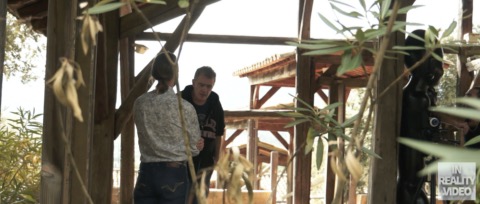 Philippe Matza
Philippe Matza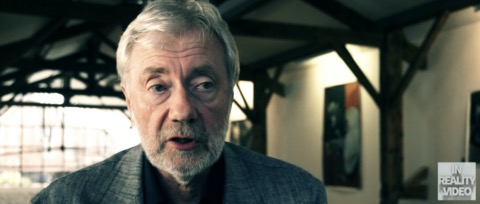 Paul Jorion
Paul Jorion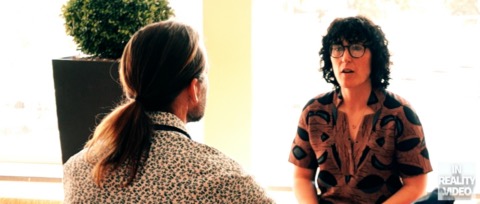 Alessandra Gnecchi
Alessandra Gnecchi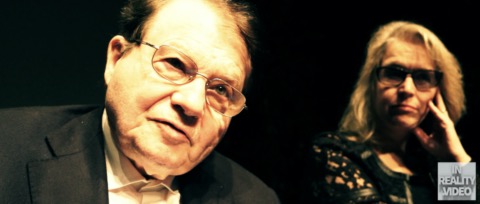 Luc Montagnier
Luc Montagnier Rachel Yehuda
Rachel Yehuda Brenda Dunne
Brenda Dunne Mario Varvoglis
Mario Varvoglis Yann Lipnick
Yann Lipnick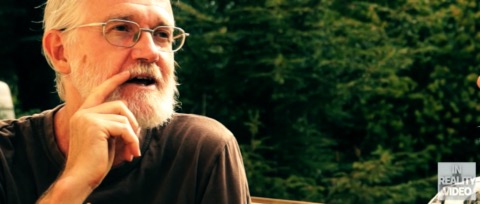 Dan Winter
Dan Winter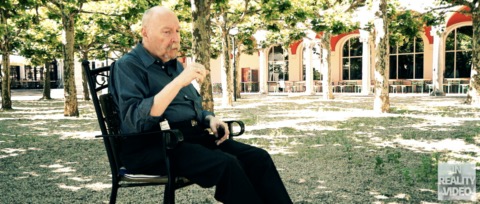 Peter Mulacz
Peter Mulacz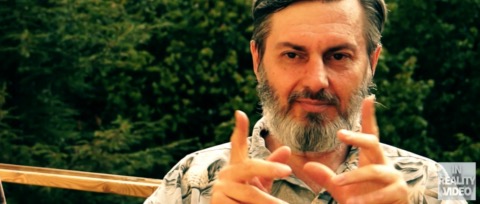 Bill Donovan
Bill Donovan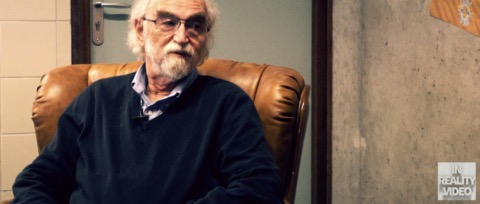 Gerald Pollack
Gerald Pollack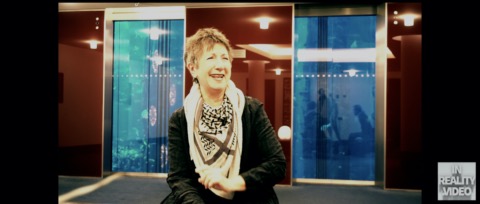 Karin Schussmann
Karin Schussmann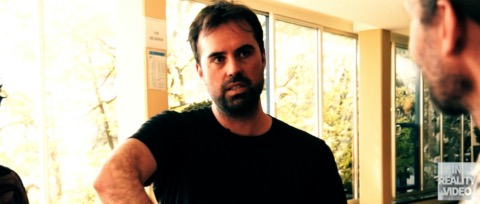 David Andriot
David Andriot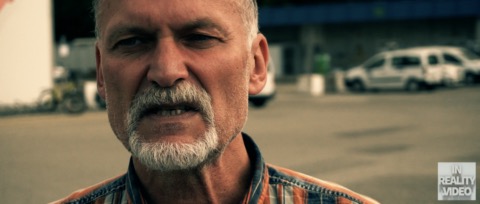 Jan Rak
Jan Rak Jampa Ludrup
Jampa Ludrup Lionel Cras
Lionel Cras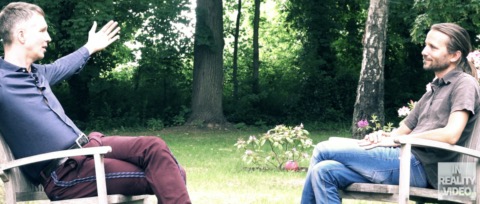 Marcus Schmieke
Marcus Schmieke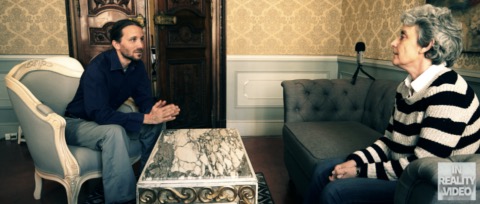 Bernadette Geraud
Bernadette Geraud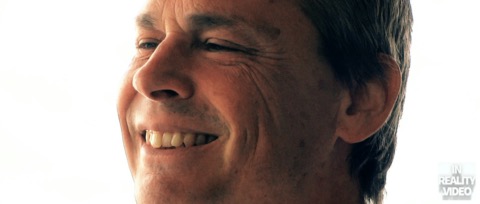 stephane cardinaux
stephane cardinaux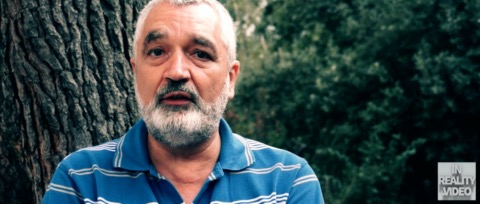 Francois Gerland
Francois Gerland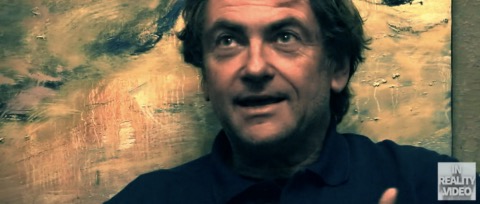 Didier Van Cauwelaert
Didier Van Cauwelaert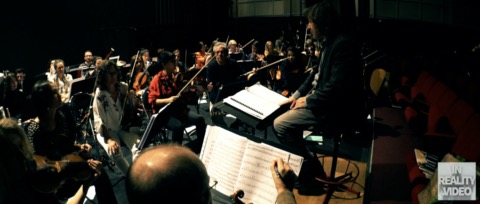 Daniel Tosi
Daniel Tosi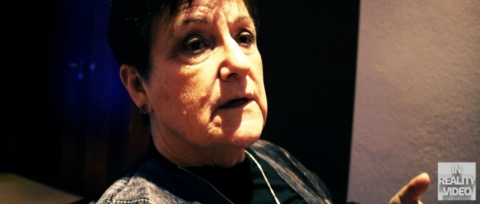 Carolyn McMakin
Carolyn McMakin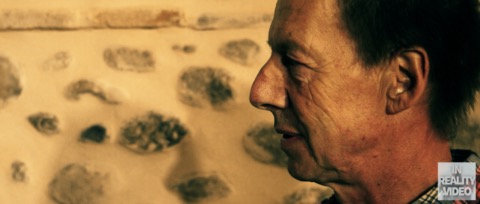 Frank Blomeyer
Frank Blomeyer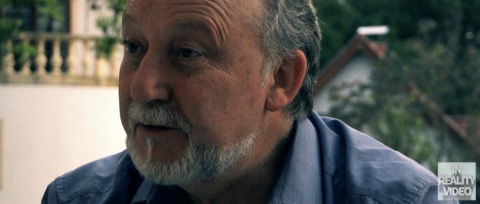 Kim Jobst
Kim Jobst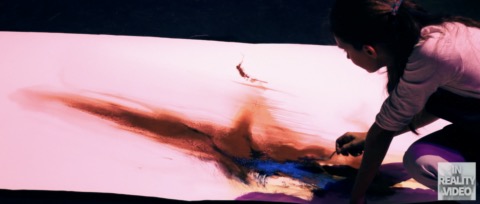 Christine Degoy
Christine Degoy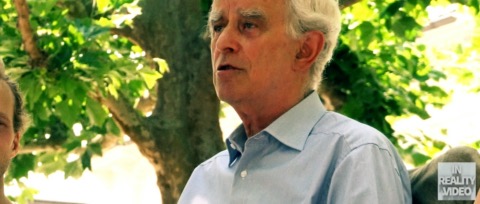 Pim Van Lommel
Pim Van Lommel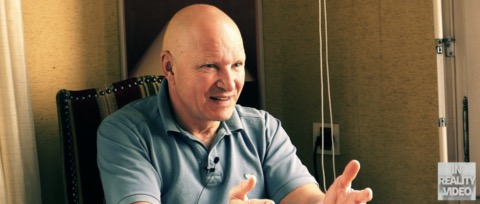 Konstantin Korotkov
Konstantin Korotkov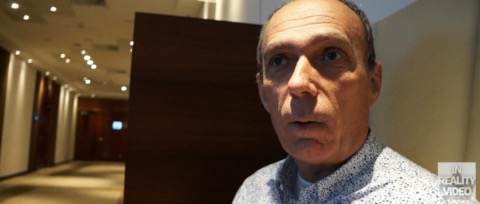 Marc Henry
Marc Henry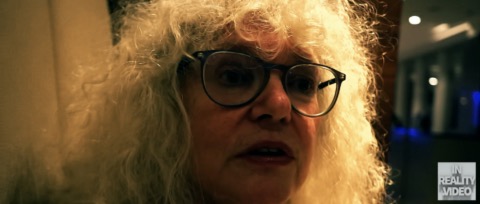 Antonie Peppler
Antonie Peppler Thomas Campbell
Thomas Campbell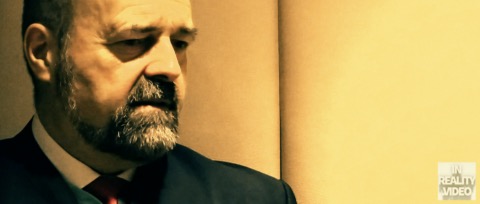 Folker Meissner
Folker Meissner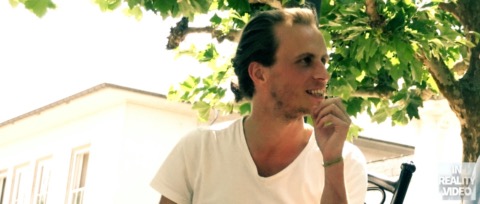 Johannes Eisenburger
Johannes Eisenburger Julie Gerland
Julie Gerland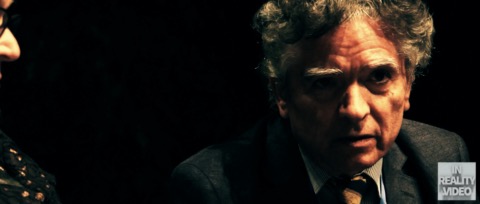 Giuseppe Vitiello
Giuseppe Vitiello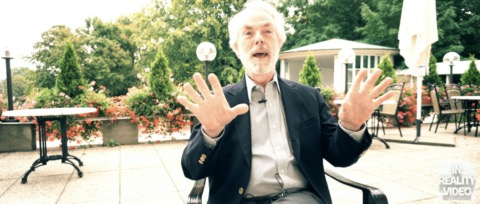 Roger Nelson
Roger Nelson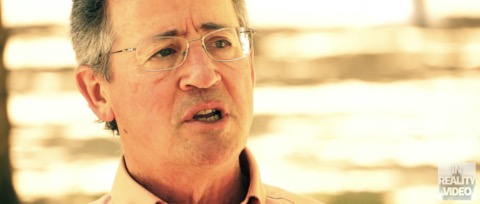 Christopher Bache
Christopher Bache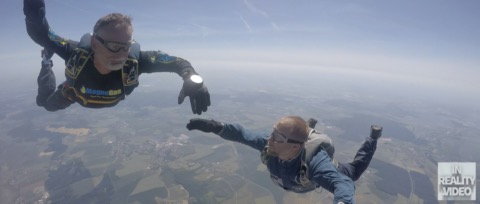 in free fall
in free fall
 EN
EN FR
FR